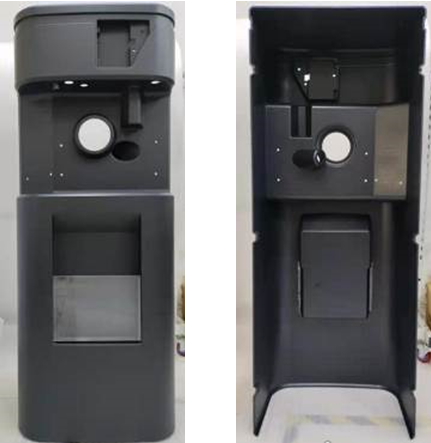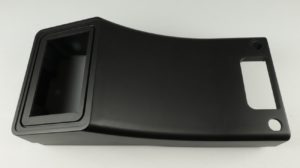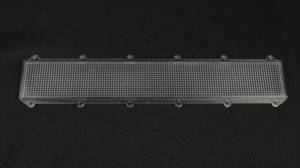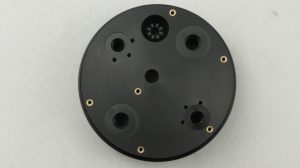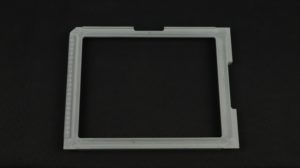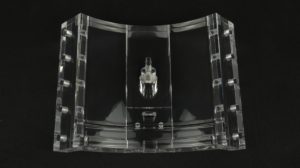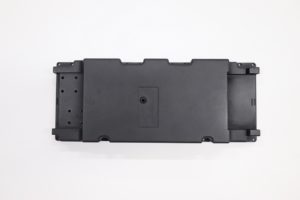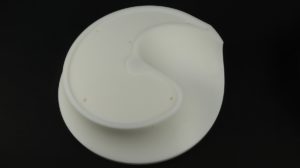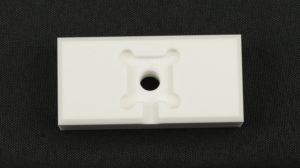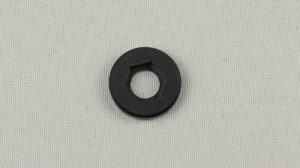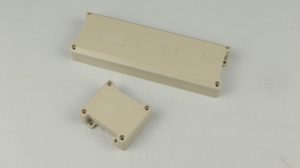Plastic Processing: How do you choose the materials to be processed?
Plastic processing is a technique for transforming plastic materials using machine tools, usually guided by high precision numerical controls. Unlike 3D printing or plastic injection molding, this manufacturing method consists of processing a solid block (or tube) of plastic material in a processing center or workshop. Which material should be chosen to process a prototype plastic part? What are the characteristics of the various machinable polymers? Prototech Asia explains this in detail.
Plastic processing, a technique for prototyping or small series production
The techniques used are identical or comparable to those used in metal processing, such as milling, routing, drilling, sawing, and turning, but also threading, tapping, planing, polishing, surfacing, and deburring. In particular, CNC (Computer Numerical Control) processing is one of the most advanced precision engineering techniques for plastic processing.
In addition, some manufacturers or service providers refer to indirect plastic processing. In reality, this expression often refers to another process such as plastic injection, where balls or chips of raw material are melted and injected by extrusion into a mold to take on the shape and set after cooling.
What are the advantages of plastic processing?
This process is mainly used for the creation of plastic prototypes or the manufacture of technical parts in single or small series in many sectors. Plastic processing allows technical and complex parts to be produced more quickly and cheaply than plastic injection molding, as molds are no longer required.
Several materials can be combined and assembled to form complex or large assemblies. For example, large parts with complex shapes can be produced in pieces that are bonded together.
Example of a machined part in ABS and PMMA glass bonding, size 1m25:
Prototypes and CNC-processed plastic parts can be used for visual and functional testing before the industrialization by another manufacturing process. Made from a compact block, they are stronger and more resistant than molded parts.
How to make the right choice of material for plastic processing?
In many industrial sectors, many thermoplastic and thermoset polymers are workable, i.e. compatible with the design and manufacture of plastic parts by processing. To make the right choice of plastic material, several criteria must be taken into account, from the machining process and the type of machine tool selected, to the mechanical, technical, and aesthetic characteristics sought for the future plastic part to be produced.
Above all, the intrinsic properties, constraints, and specificities of each material will allow or not the successful and precise performance of all the operations required in plastic processing to obtain the part to be manufactured. The final use and the environment of the part are also determining factors in the choice of material to be processed.
Some general rules for plastic processing according to material category
In plastics processing, the mechanical properties and processing capabilities of a material depend on its molecular structure (type of chemical bonds, shapes, orientation, etc.). For example, semi-crystalline plastics offer good dimensional stability and are easily machined at high yield and high feed rates, provided that heat input is kept to a minimum.
Amorphous thermoplastics, on the other hand, are much more sensitive to high pressures and contact with greasy fluids. They can crack, which is why the feed rate must be limited and the machinery adapted, with a sharp cutting tool and high rotation speed. On the other hand, carbon fiber or glass fiber reinforced plastics require pre-heating, low clamping, and harder metal or diamond cutting tools for optimal processing.
The main processable plastic materials
The following is a non-exhaustive list of the most common materials used in plastic processing.
ABS plastic
For plastic processing of parts with low technical constraints, Acrylonitrile Butadiene Styrene plastic offers excellent guarantees, in particular thanks to its rigidity, strength, and insulating capacity. We use it very frequently in many fields, and it is ideal for all types of finishing (gluing, polishing, painting, marking, chroming, etc…).
Polycarbonate (PC)
Polycarbonate is very strong and has excellent mechanical resistance. It is unbreakable and accepts all machining and finishing processes. It can also be used to manufacture transparent parts with good UV resistance and long life.
Its good resistance to chemical reactions, impact, and bending makes it easy to be processed. It must be cold bent. For precision or technical parts with high stresses, polypropylene is recommended for plastic processing. For example, we use it to make hinges. The textured finish is generally ‘grained’ and has poor paintability.
Polyoxymethylene (POM)
Stable, rigid, and fatigue resistant, polyoxymethylene makes it easy to process apart. In particular, its spring effect proves interesting in processing. This material is opaque and not very sensitive to humidity or chemicals. However, it is a material that deforms easily and requires slower machining. POM cannot be painted in terms of finish and may be difficult to polish on technical shapes.
Polyvinyl chloride (PVC)
Polyvinyl chloride is characterized by its resistance to weathering, acids, and also to impact, which can facilitate the processing of PVC parts. It is non-combustible.
Plexiglas (PMMA)
Plastic processing of PMMA is common for the design of transparent, smooth, UV-resistant parts, especially in optics. Cutting, drilling, and bending are no problem for this glossy, hydrocarbon, and solvent-resistant material.
Polyamide (PA)
Polyamide is very well balanced between its mechanical and chemical resistance capabilities and can be brittle despite its toughness and wear resistance. It can be loaded by 10 and 30% or be UL94 v0. On the other hand, too much moisture absorption can deform the workpiece, which must be taken into account in the design and afterward. PA is difficult to polish and has poor paintability (to be considered for the appearance of the parts).
High-Density Polyethylene (HDPE)
High-density PE plastic reacts well to abrasion and slippage. It is flexible and also resistant to microwaves and many chemicals, making it a good choice for processing components in the food sector. However, the material is easily deformed and cannot be painted.
Polytetrafluoroethylene (PTFE)
This plastic offers good thermal resistance but less mechanical strength. With PTFE, the surface of the machined part must be well finished as it is rather rough and may show imperfections at the first milling.
Polyphenylene sulfide (PPS)
In CNC processing, PPS plastic is used for its resistance to abrasion, UV, and heat, but also to acids.
Polyetheretherketone (PEEK)
PEEK plastic can retain its chemical and mechanical properties despite high heat, which can be an advantage in processing.
If you have a question or need advice on the choice of plastic materials to be processed, do not hesitate to contact us: our experts will guide you from A to Z in your CNC plastic machining project with Prototech Asia.

